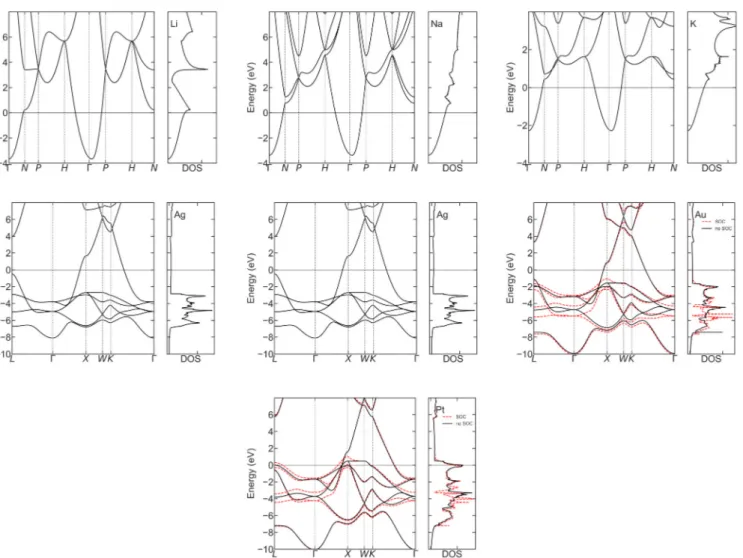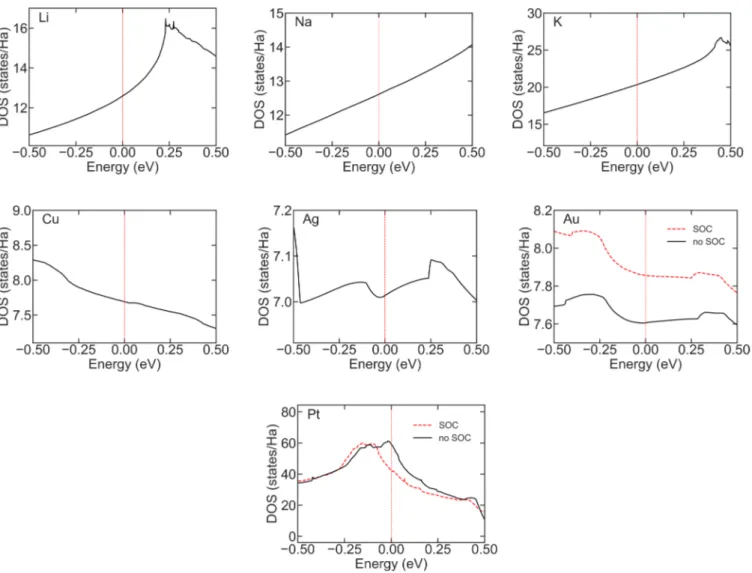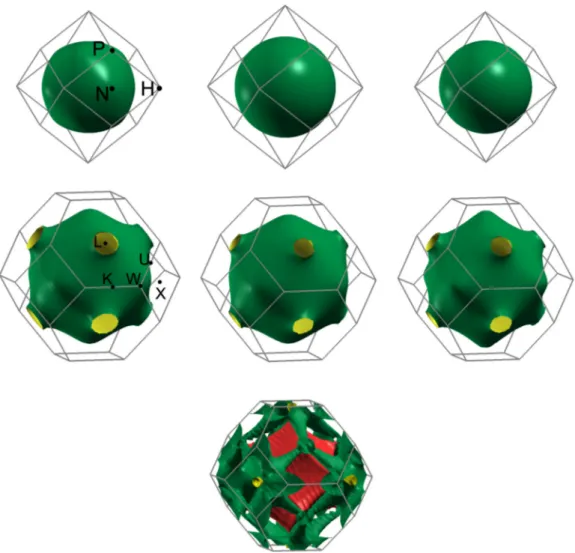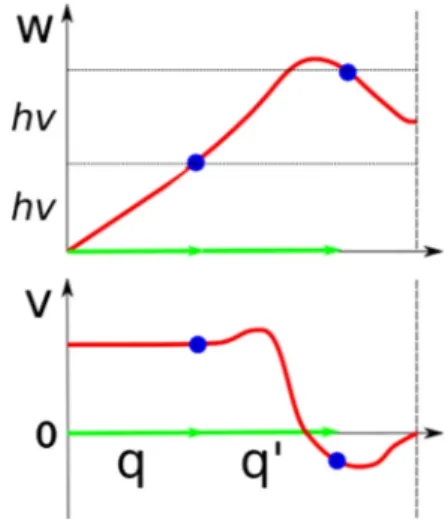Thermoelectric properties of elemental metals from first-principles electron-phonon coupling
Texte intégral
Figure




Documents relatifs
Abstract: The structural, electronic, and optical properties of the cubic In 1?x B x As y P 1?y quaternary alloys lattice matched to InP and BeS have been investigated by using
L’archive ouverte pluridisciplinaire HAL, est destinée au dépôt et à la diffusion de documents scientifiques de niveau recherche, publiés ou non, émanant des
Finally, in order to obtain the elec- tron density relevant to light absorption, heat flux, or mechanical stress induced by electronic heating, an esti- mation of the number of
The only d-band metal so far stu- died in realistic detail is Nb for which four inde- pendent calculations have recently been reported /2,3,4,5/. In this paper we report
The first step was to calculate, using the density functional formalism [10, 11], the displaced electron densities around a nucleus embedded in a jellium vacancy for
L’archive ouverte pluridisciplinaire HAL, est destinée au dépôt et à la diffusion de documents scientifiques de niveau recherche, publiés ou non, émanant des
In summary, the combination of XPS, AAS and XAS measurements clearly confirms the presence of the {Co II (TPMA)} 2 þ complex at the surface of the nanoparticles and the formation of
[r]
![FIG. 4. Electrical resistivity as a function of temperature for Li, Na, K, Cu, Ag, Au, and Pt, compared with experimental data [46–49]](https://thumb-eu.123doks.com/thumbv2/123doknet/5893939.144156/6.884.64.818.87.662/fig-electrical-resistivity-function-temperature-compared-experimental-data.webp)
![FIG. 5. Seebeck coefficient as a function of temperature for Li, Na, K, Cu, Ag, Au, and Pt, compared with experimental data [50–62]](https://thumb-eu.123doks.com/thumbv2/123doknet/5893939.144156/7.884.68.827.85.659/fig-seebeck-coefficient-function-temperature-compared-experimental-data.webp)

![FIG. 8. DFPT calculated phonon dispersion curves, compared with experimental data [67–73], for Li, Na, K, Cu, Ag, Au, and Pt](https://thumb-eu.123doks.com/thumbv2/123doknet/5893939.144156/10.884.58.823.467.1077/fig-dfpt-calculated-phonon-dispersion-curves-compared-experimental.webp)
![FIG. 9. Logarithmic-scale electrical resistivity as a function of temperature for Li, Na, K, Cu, Ag, Au, and Pt, compared with experimental data [46–49]](https://thumb-eu.123doks.com/thumbv2/123doknet/5893939.144156/11.884.72.822.85.653/logarithmic-scale-electrical-resistivity-function-temperature-compared-experimental.webp)